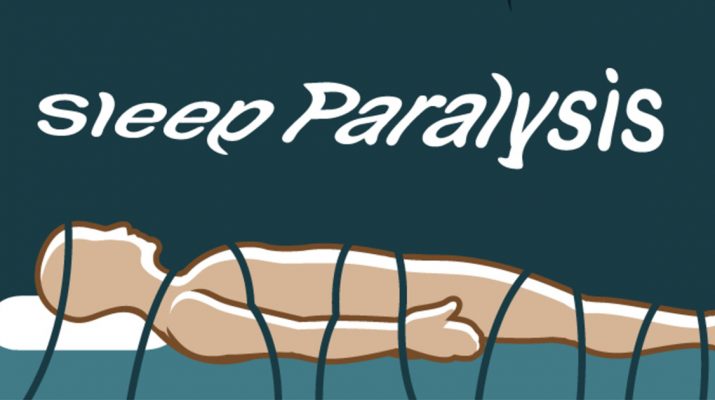Have you ever woken up unable to move or speak? Have you ever felt negative energy in your room with no explanation? You might have experienced sleep paralysis.
What is Sleep Paralysis?
Sleep paralysis is the temporary inability to control your body’s movements or speech while you’re between sleeping and wakefulness. The frightening sensation usually lasts only seconds to minutes and is sometimes accompanied by the sense that there is an ominous presence nearby. Some people experience a heaviness on their chest, have hallucinations, or are unable to open their eyes during sleep paralysis (though many people do have eye control).
Sleep paralysis is not usually a frequent occurrence, but you should seek medical attention if you:
- experience sleep paralysis regularly
- can’t fall asleep because of anxiety or fear about sleep paralysis
- show the symptoms of narcolepsy, including chronic fatigue, falling asleep during the day, and temporary loss of muscle control
Watch: Real People Share Their Creepy Sleep Paralysis Nightmares
What Causes Sleep Paralysis?
Sleep paralysis happens during the process of waking up, or less commonly, falling asleep. It is caused by REM cycles overlapping with wakefulness.
Usually, your sleep follows this rough pattern:
Stage 1: The first stage of sleep is what you might call “nodding off”. Your brain takes approximately 7 minutes to go from actively awake to an early stage of sleep. During this stage, noises or movements can easily interrupt your sleep.
Stage 2: Your brain takes about 20-30 minutes to approach a deep sleep. You don’t usually experience dreams in this stage.
Stage 3: You’re sleeping deeply, and (apart from people who talk in their sleep), you don’t usually stir in this stage. You experience rapid eye movements (REM) and dream in this stage. Over the course of the average night, your brain cycles between stages 2 and 3, with longer periods of REM towards the tail end of the night.
When someone experiences sleep paralysis, however, their brain enters stage 2 and even stage 1 while still experiencing REM sleep.
What are the Risk Factors of Sleep Paralysis
Sleep paralysis is most common among teens and young adults, however, other risk factors can make the experience more likely.
- Sleep disorders like narcolepsy
- Disrupted sleep-wake cycle
- Sleeping on back
- Genetics
- Emotional trauma
- Depression
- Panic disorders
How to Prevent Sleep Paralysis
In some cases, doctors prescribe anti-depressants that alter sleep cycles, however most cases of sleep paralysis can be improved with small adjustments to your routine.
- Ensure you’re reaching your recommended sleeping time.
- Avoid screen time before bed. Keep your sleeping environment dark and quiet.
- Keep your bedtime and wake-up time the same every day (yes, even on weekends).
- Exercise regularly, but not within 4 hours of going to sleep.
- Avoid caffeine and large meals in the evening.
Tips for Getting Out of Sleep Paralysis
While sleep paralysis won’t last long, it can still be a scary experience. Some people who suffer from sleep paralysis recommend these tricks for cutting the experience short while it’s happening.
- Try to focus on exactly where the back of your head meets your pillow. Concentrating on this real physical sensation can help anchor you to the real world and pull you out of your dream.
- If you can, try breathing irregularly (such as taking two breaths out, one breath in, etc.).
- Don’t try to talk. It can make the experience scarier when you’re unable to. Instead, try tensing up various muscle groups.
- Try practicing lucid dreaming. Being able to control your dreams can help you stop the unwanted hallucinations.
- Just remember that this is a dream. As scary as it can be, it will pass.

